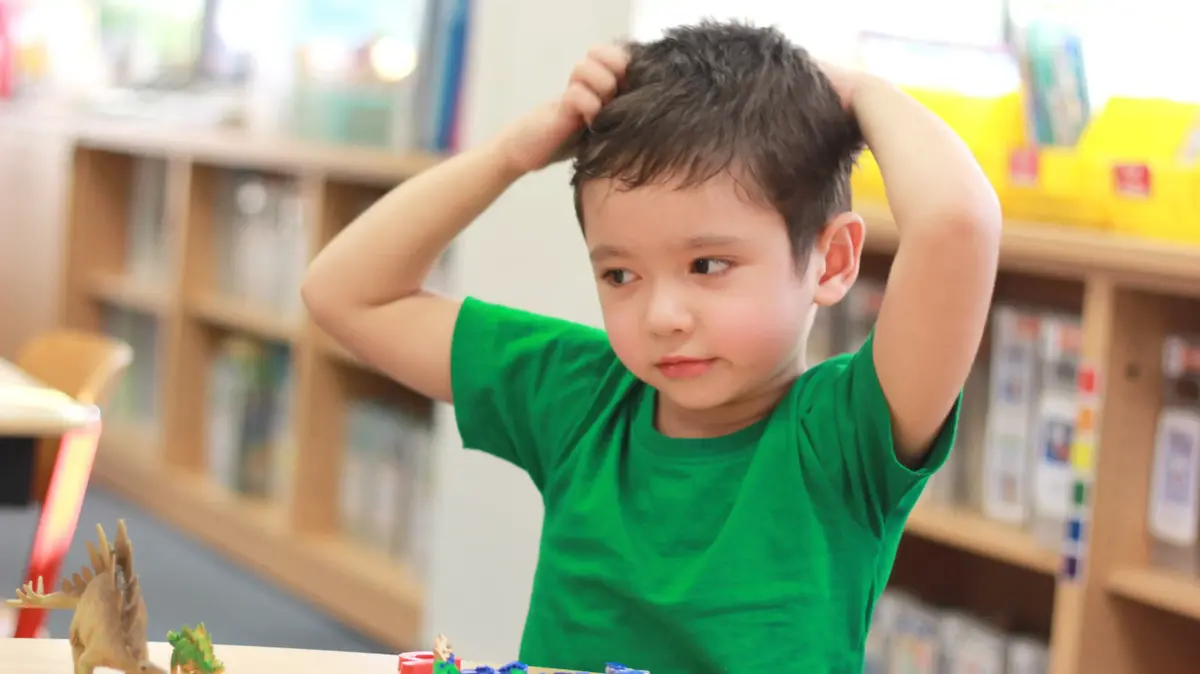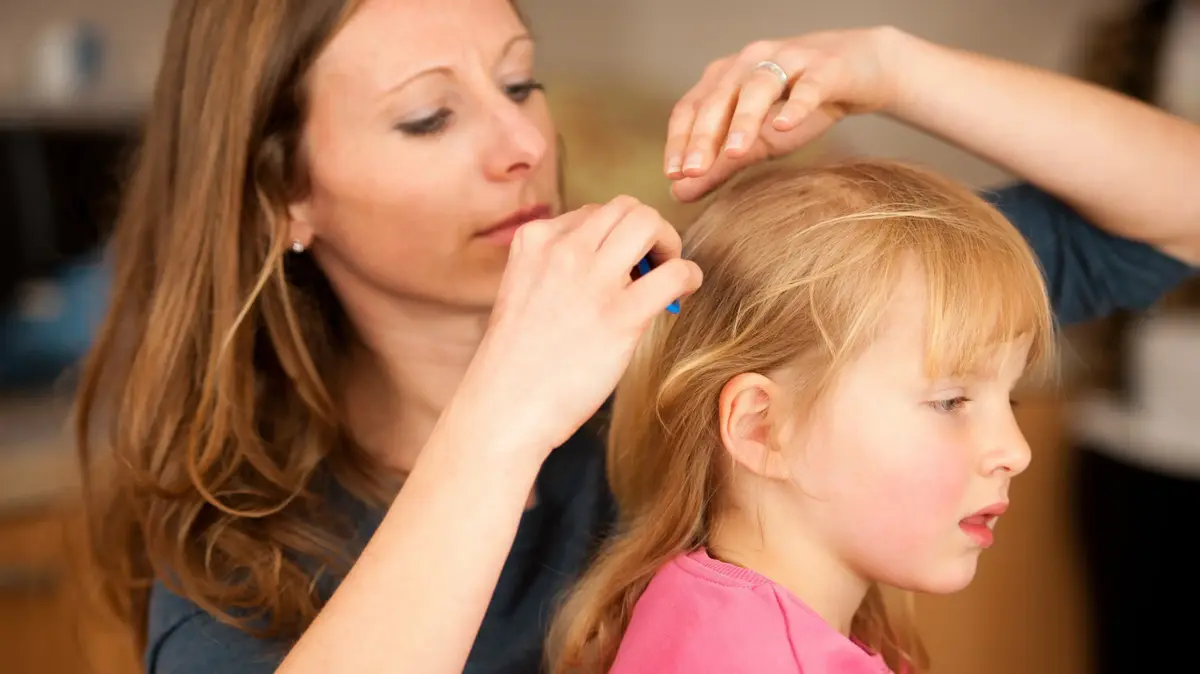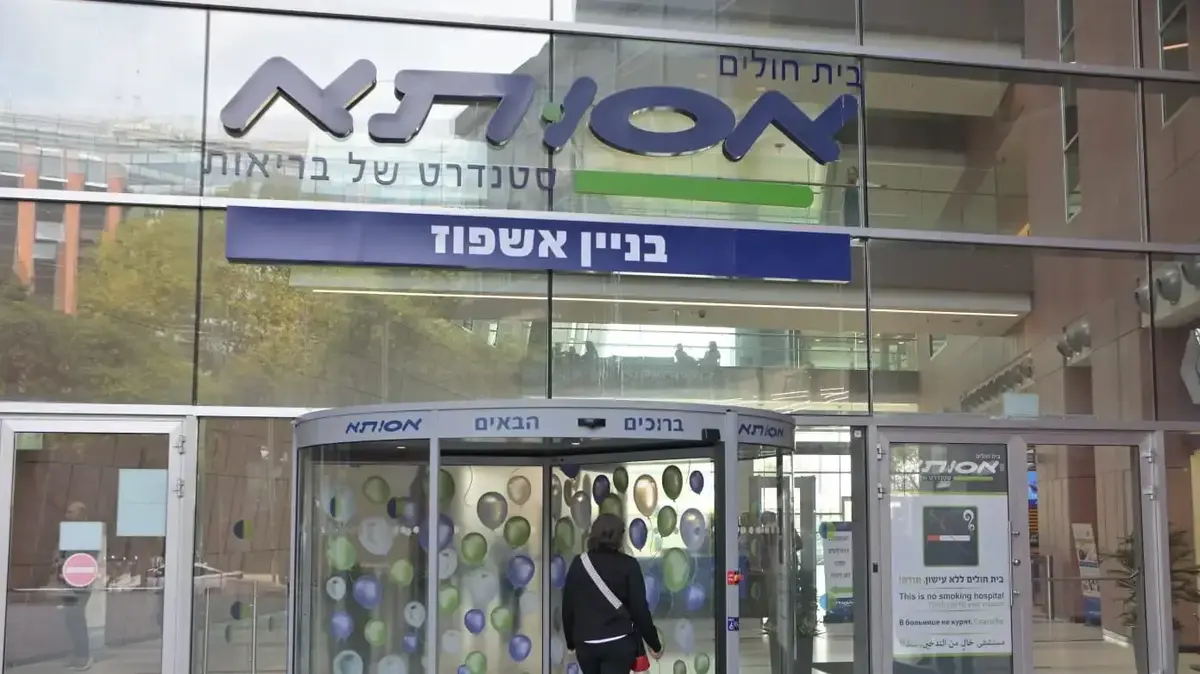has not left us since ancient times.
A boy scratching his head (Photo: ShutterStock)
Although we are no longer in Egypt, it seems that the plague of lice, which began in ancient times, refuses to abandon us despite the progress and care and it reaches the heads of our children and from there to us.
So what causes lice?
Is it really related to parental neglect and lack of hygiene?
And are there some whose lice love them more?
So here is what we know:
first and foremost, contrary to what may be commonly thought - the louse does not fly, does not jump and does not swim.
She just moves forward and goes from place to place.
This little parasite feeds on the blood of the person it lives on, and has no ability to exist outside of the body it treats.
Therefore the infection is done during contact between two heads when one head is infected.
This is why many parents, grandmothers, kindergarteners, etc. frequently get infected with lice.
In addition, head lice cannot infect other areas of the body, such as pubic hair or body hair, since it is a different type of lice, with the second usually transmitted through sexual contact, while the first type (head lice) is very common in children who are in crowded settings with close contact, as well as For those who come into contact with children.
And finally, it is important to clarify that the lice are not actually found on "dirty" or unhygienic heads.
It is not related to cleaning but to specific treatment for the parasite and infection from one to another.
Head lice in most cases cause intense itching in the scalp which is caused, you may be surprised, due to an allergic reaction to the lice and not due to the bites on the scalp.
A part of the population is not allergic to head lice, so they will not feel infected at all.
In addition, itching as an allergic reaction to lice may appear up to three months after the infection and in rare cases it may cause an inflammatory infection due to repeated scratching of the area.
Sometimes this is covered by an infection from two bacteria.
In some cases it is possible to notice a rash on the back of the neck caused by a reaction to the secretions of the lice.
One call is enough
It is difficult to locate the lice on the scalp, sometimes even after a thorough examination of the head and hair.
The presence of unhatched lice eggs and empty eggs are not sufficient to establish an active head lice diagnosis, since it is difficult to distinguish between unhatched eggs and empty eggs, which may remain on the hair even after effective treatment for lice.
To determine that a head lice infestation has indeed occurred, at least one louse must be located by combing with a dense comb.
When a suspicion of infection arises, it is worth checking if there are lice eggs at the base of the hair.
In addition, comb the hair with a dense comb to locate and remove the lice themselves.
Without complementary treatment with a medical preparation, the lice may continue to multiply on the head.
More in Walla!
The breakthroughs, the treatments and what does the future hold?
Everything you need to know about diabetes
In collaboration with Sanofi
It is possible to treat with natural materials but not only.
Rosemary (Photo: ShutterStock)
Mistakes in treating lice
One of the biggest mistakes parents make in the treatment of lice is using all kinds of natural substances concocted at home.
So yes, it is possible to use preparations containing vinegar and there is no objection to using "natural" preparations and not those containing chemical substances, but it is recommended not to brew such by yourself at home, but to use ready-made preparations that have been adjusted for application on the scalp.
Applying substances that are not adapted to the scalp can cause significant skin irritation and secondary infection.
So how do you get rid of them?
First of all understand that there is no ZBang and we are done.
The louse lays eggs and the eggs and sometimes even the lice develop resistance to the contact chemicals found in the preparations.
Also, many times there is repeated infection because not all the children in the same place treat the problem at the same time.
In addition, it must be understood that the more aggressive we are, the more effective the treatment will be.
on the contrary.
Using strong substances (vinegar, bleach, petroleum, etc.) or even substances from the pharmacy with injured skin - can cause significant secondary irritation in the scalp.
In addition, head lice multiply quickly and develop resistance to lice-killing medical preparations.
In order to treat lice, patience, long-suffering and, above all, repeated treatments are required.
There are two means of killing lice - chemical extermination (such as spraying for insects) and physical means (ie you mechanically "suffocate" the lice).
Today there are new preparations based on silicone and oil, the assumption being that the head lice will not develop resistance against these preparations since their effect is not chemical, but physical.
One of the innovations from the last year for the treatment of head lice is ivermectin ointment which can only be given with a doctor's prescription.
Ivermectin is used to treat infections caused by parasites.
It eliminates the lice in one go.
All you need to do is apply to the scalp, wait 15 minutes and wash.
After you have made sure that your child is indeed infected with lice, you can treat him at home by combing with a dense comb or using a lice killer.
It is important to understand that none of the methods protects against re-infection.
The treatment can be completed with natural substances such as tea tree oil, peppermint oil or rosemary oil, which have been found to be effective in preventing re-infection, as well as with a daily shampoo that contains high concentrations of rosemary oil.
Since head lice do not survive for long when they are not in contact with the scalp, there is no need to wash bedding or clothes that have come in contact with the lice.
At the same time, if it is necessary to carry out a thorough disinfection, the fabrics must first be aired for 3 days, and only then washed for half an hour, at a temperature of 60 degrees Celsius.
Tips from a mother who raised four children (three sons and a daughter and was infected quite a bit with lice in her life)
• It should be understood that combing the scalp with a thick comb still remains the most basic and effective treatment against lice.
• The treatment must be repeated even every other day, in order to catch with the comb even small lice that have not hatched.
You can also help by removing the eggs manually (eggs that are far from the scalp - there is a chance that they are not alive, while eggs close to the scalp are alive in most cases).
• If there are knots in the hair or secretions that have stuck to the scalp as a result of a secondary infection, the infection should be treated and you should use hair conditioners and comb the hair gently.
There is no need to etch the scalp or pull hair in the process.
The meaning is the repetitions and not the aggressiveness.
• I recommend using lice killers (usually containing permethrin in various concentrations, melatonin) when applied to the surface of the scalp and massaged into the scalp (assuming the scalp is not injured), and to repeat the use of the substance only after ten days.
In between, you can continue to do treatment with a thick comb and at the same time continue preventive treatment once to twice a week.
• It is recommended to use a lice repellent treatment on a regular basis such as rosemary oil and also to go as much as possible with hair collected in frames full of children.
• It is possible to combine the use of organic-natural lice killers (silicone, vinegar, peppermint oil or rosemary oil), but it is not recommended under any circumstances to brew alone at home, but to use preparations that have been adjusted in terms of concentration and quality for use on children's skin (use of an uncontrolled preparation may cause for stimulating the scalp and not necessarily for effectiveness).
Dr. Lahvit Akerman is a dermatology specialist
health
parenthood
child's health
Tags
lice
hair
skin







